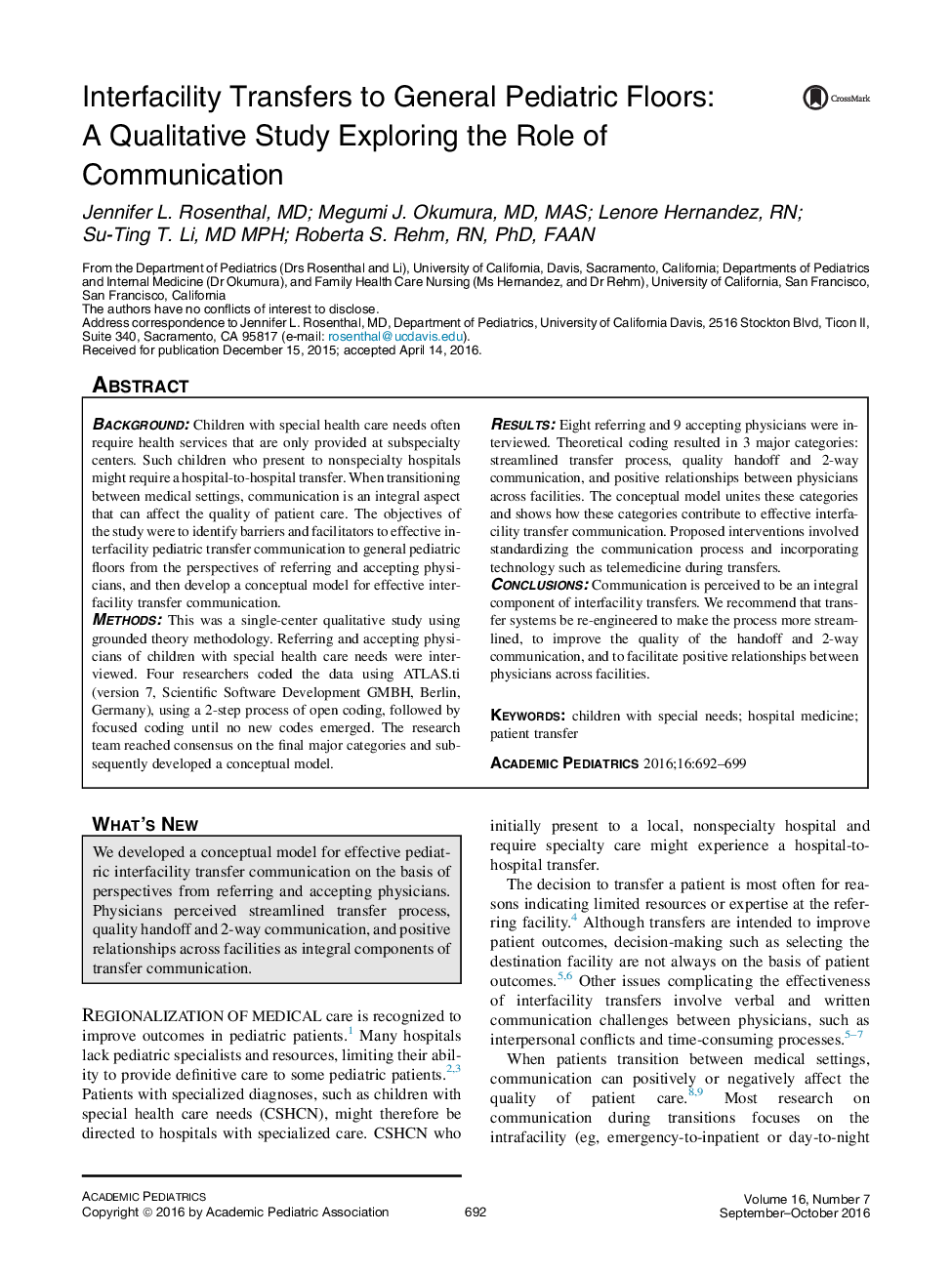| Article ID | Journal | Published Year | Pages | File Type |
|---|---|---|---|---|
| 4138848 | Academic Pediatrics | 2016 | 8 Pages |
BackgroundChildren with special health care needs often require health services that are only provided at subspecialty centers. Such children who present to nonspecialty hospitals might require a hospital-to-hospital transfer. When transitioning between medical settings, communication is an integral aspect that can affect the quality of patient care. The objectives of the study were to identify barriers and facilitators to effective interfacility pediatric transfer communication to general pediatric floors from the perspectives of referring and accepting physicians, and then develop a conceptual model for effective interfacility transfer communication.MethodsThis was a single-center qualitative study using grounded theory methodology. Referring and accepting physicians of children with special health care needs were interviewed. Four researchers coded the data using ATLAS.ti (version 7, Scientific Software Development GMBH, Berlin, Germany), using a 2-step process of open coding, followed by focused coding until no new codes emerged. The research team reached consensus on the final major categories and subsequently developed a conceptual model.ResultsEight referring and 9 accepting physicians were interviewed. Theoretical coding resulted in 3 major categories: streamlined transfer process, quality handoff and 2-way communication, and positive relationships between physicians across facilities. The conceptual model unites these categories and shows how these categories contribute to effective interfacility transfer communication. Proposed interventions involved standardizing the communication process and incorporating technology such as telemedicine during transfers.ConclusionsCommunication is perceived to be an integral component of interfacility transfers. We recommend that transfer systems be re-engineered to make the process more streamlined, to improve the quality of the handoff and 2-way communication, and to facilitate positive relationships between physicians across facilities.
